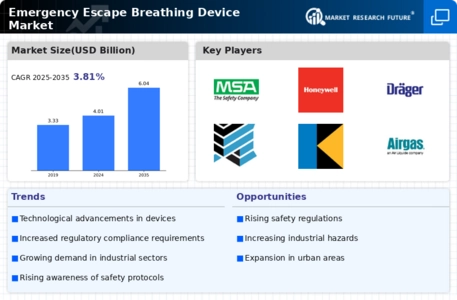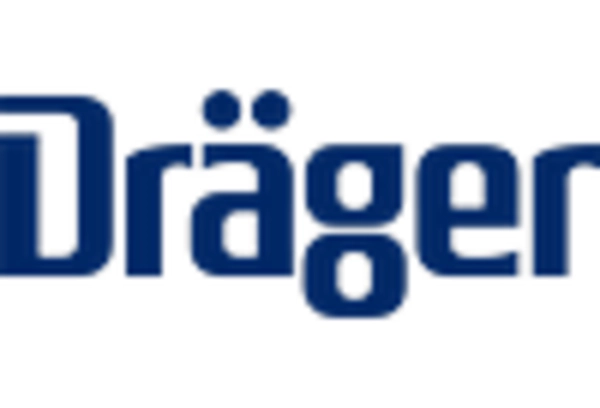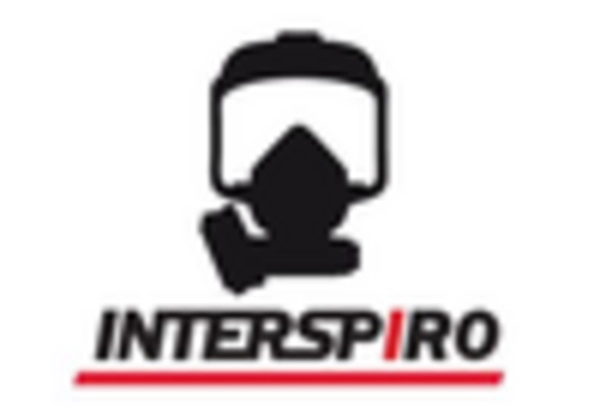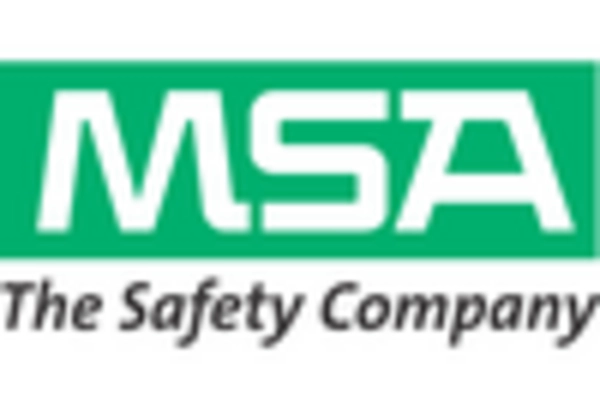Stringent Regulatory Standards
The Emergency Escape Breathing Device Market is significantly influenced by stringent regulatory standards imposed by various safety organizations. These regulations mandate that devices meet specific performance criteria to ensure user safety during emergencies. Compliance with these standards not only enhances the credibility of manufacturers but also drives innovation as companies strive to exceed basic requirements. The increasing enforcement of safety regulations across industries such as construction, mining, and oil and gas is likely to propel the demand for compliant emergency escape breathing devices. As a result, the market is expected to expand, with an estimated increase in demand by 8% annually as industries prioritize safety and compliance.
Increased Focus on Workplace Safety
The Emergency Escape Breathing Device Market is benefiting from an increased focus on workplace safety across various sectors. Organizations are recognizing the importance of equipping employees with the necessary tools to respond effectively in emergencies. This heightened awareness is leading to the implementation of comprehensive safety training programs and the procurement of emergency escape breathing devices as standard safety equipment. The market is likely to see a significant uptick in demand as companies prioritize employee safety and compliance with occupational health and safety regulations. It is estimated that the market could grow by approximately 7% annually as businesses invest in safety infrastructure.
Rising Awareness of Environmental Hazards
The Emergency Escape Breathing Device Market is also influenced by the rising awareness of environmental hazards and their potential impact on human health. As natural disasters and industrial accidents become more prevalent, the need for effective emergency response equipment, including breathing devices, is increasingly recognized. Public and private sectors are investing in safety measures to mitigate risks associated with air quality deterioration during emergencies. This growing awareness is likely to drive demand for emergency escape breathing devices, with projections indicating a market growth rate of around 9% in the coming years as organizations seek to enhance their preparedness for environmental emergencies.
Growing Industrialization and Urbanization
The Emergency Escape Breathing Device Market is experiencing growth due to the rapid industrialization and urbanization trends observed in various regions. As industries expand and urban areas become more densely populated, the potential for emergencies increases, necessitating the need for effective escape solutions. Industries such as manufacturing, chemical processing, and construction are particularly vulnerable to hazardous situations, thereby driving the demand for emergency escape breathing devices. The market is projected to grow as companies invest in safety measures to protect their workforce, with an anticipated increase in market size by 10% over the next few years, reflecting the urgent need for reliable safety equipment.
Technological Innovations in Emergency Escape Breathing Devices
The Emergency Escape Breathing Device Market is witnessing a surge in technological innovations that enhance the efficiency and effectiveness of these devices. Advanced materials and design improvements are leading to lighter, more compact devices that are easier to carry and deploy in emergencies. For instance, the integration of smart technology allows for real-time monitoring of air quality and device functionality, which is crucial in high-stress situations. Furthermore, the development of user-friendly interfaces ensures that individuals can operate these devices with minimal training. As a result, the market is projected to grow at a compound annual growth rate of approximately 6.5% over the next five years, driven by these technological advancements.

















Leave a Comment